October 18, 2023
Fall Premiere: Native Plant Rescue + Urban Pocket Prairie
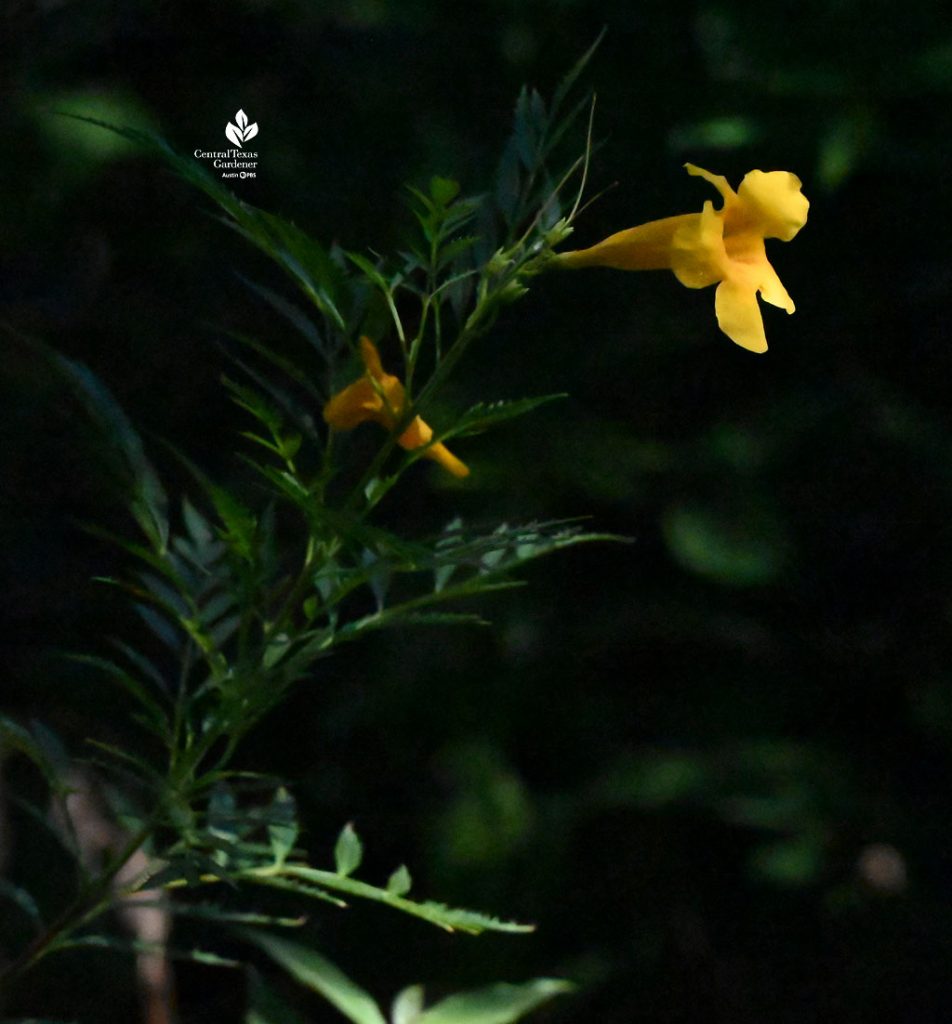
Last Saturday as we headed into Texas Native Plant Week, I dashed about my garden as the moon’s voyage gradually eclipsed mid-day’s harsh sunlight. Native Tecoma stans (yellow bells) took on photographic romance that it lacked moments before. Generally, it’s romanced by all kinds of bees, butterflies, and hummingbirds.
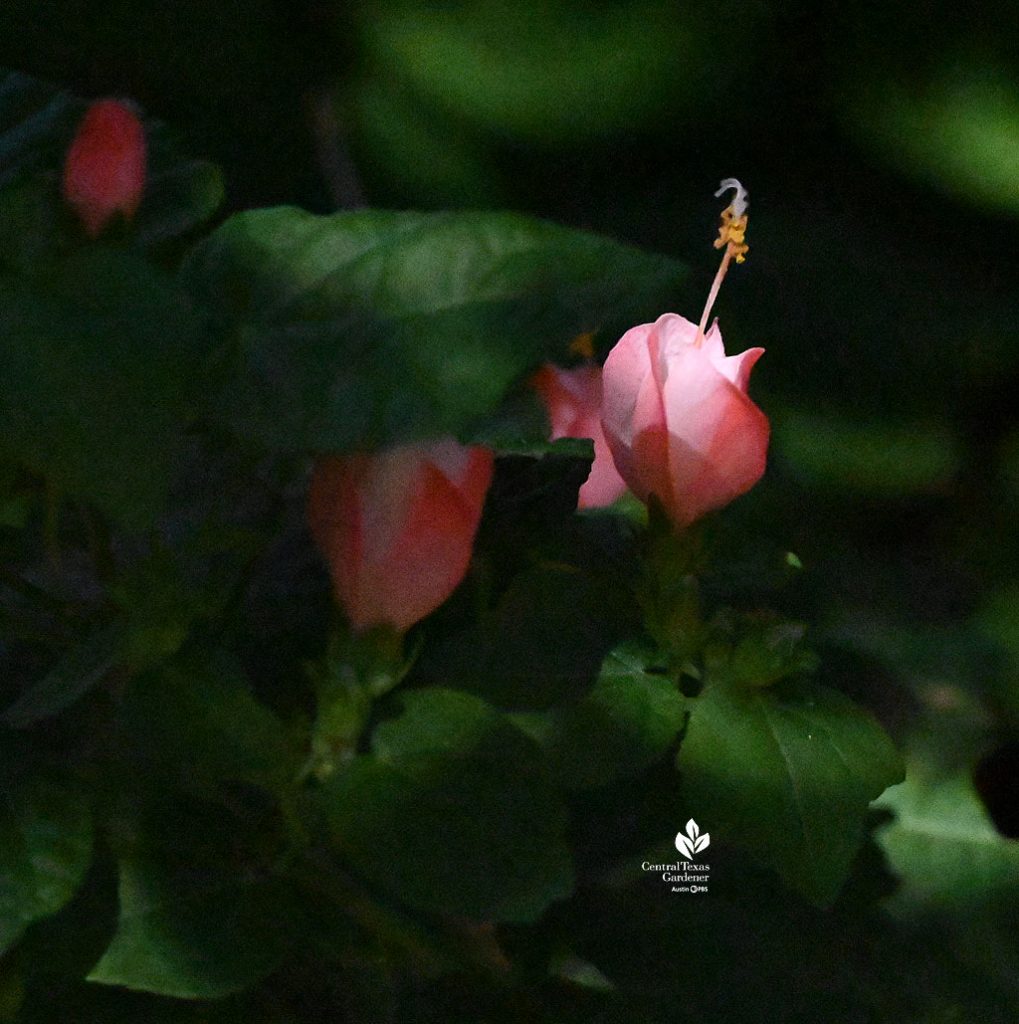
Bees snuggling into native wax mallows—including cultivar ‘Pam’s Pink’—briefly paused their lunch break.
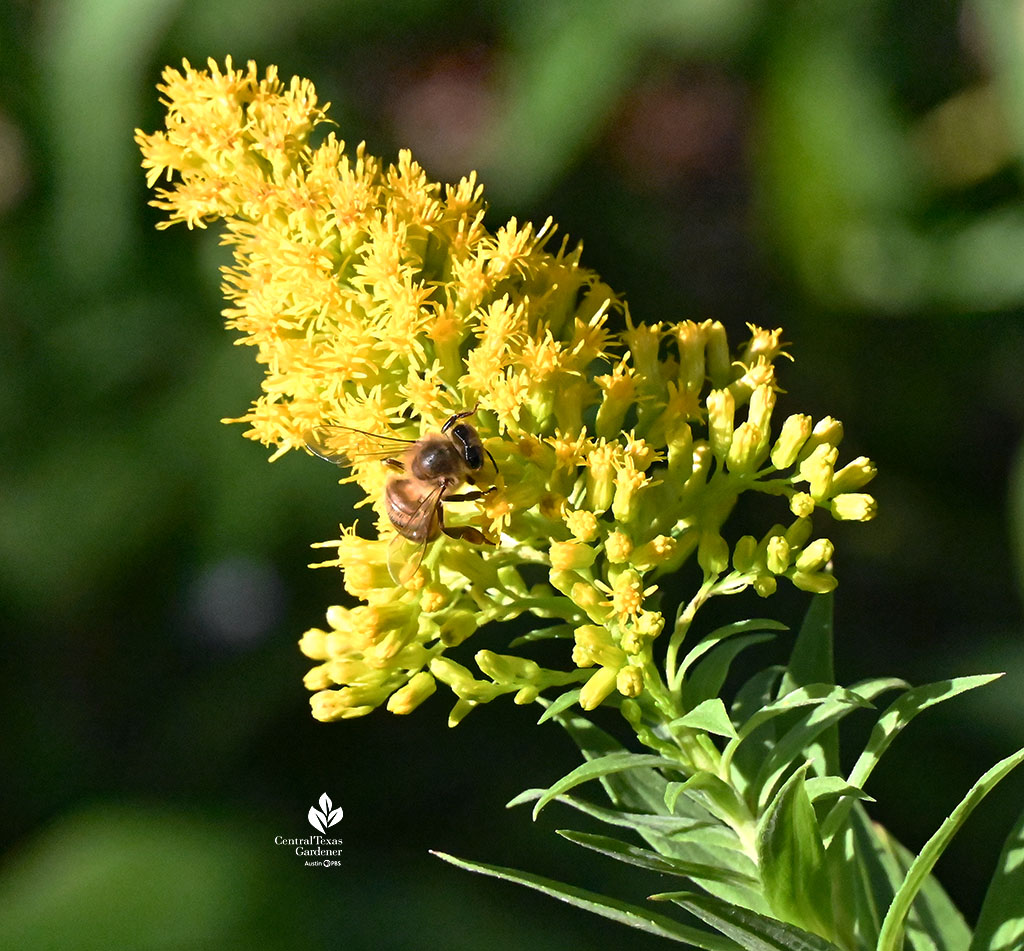
Later, I finally grabbed a shot of a bee on native tall goldenrod (Solidago altissima), recently quite a trick since a breeze or a cloud saw me coming! These plants came free with our yard. Yes, they can be aggressive, but I’m pleased that they run along a back fence for wildlife value and their claim to this land long before I was here.
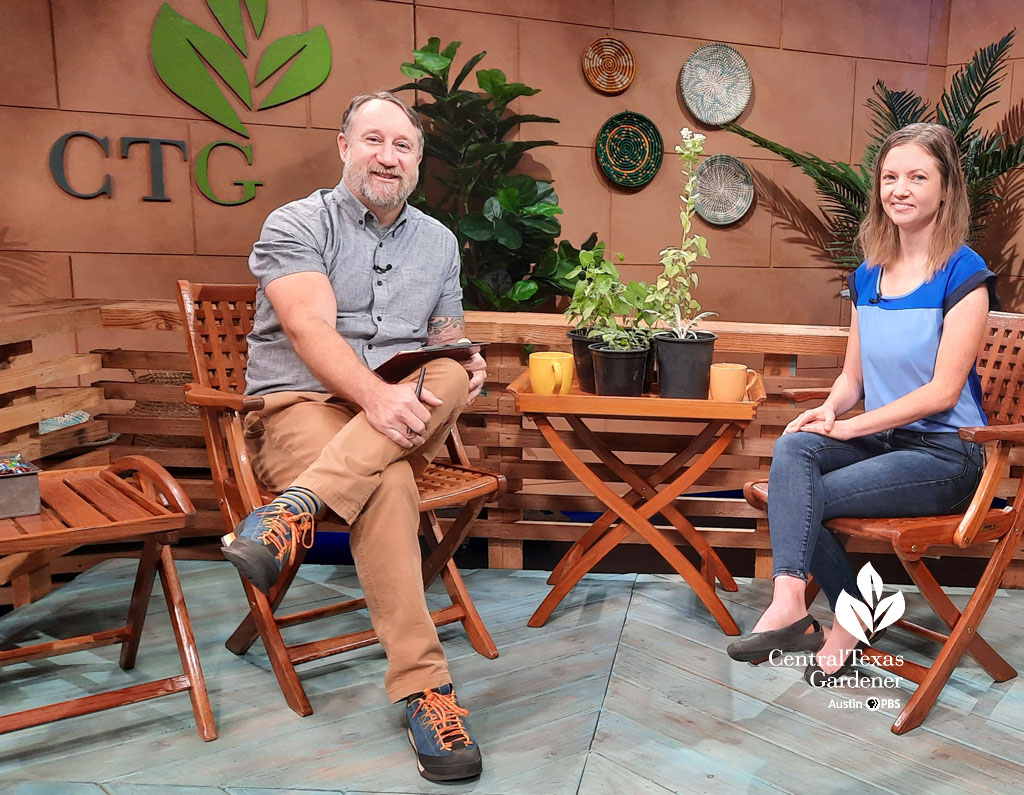
Every day, we all watch habitat vanish as construction scrapes away native plants, impacting bees, butterflies, birds, and other essential wildlife. Ashley Landry didn’t just stand by and sigh. Instead, she dug in with a shovel, co-founding Native Plant Rescue Project in Williamson County. This week, she joins John Hart for the story behind this collaboration with the Williamson County Native Plant Society and Good Water Texas Master Naturalists.
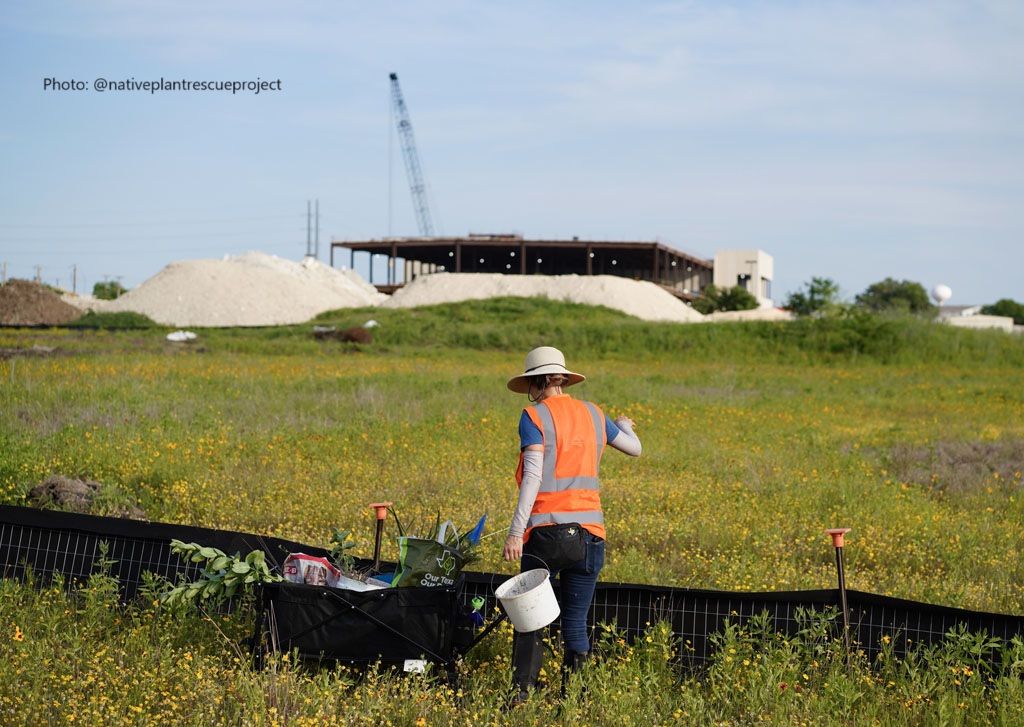
“I started learning the plants of Williamson County. . . plants that I had never noticed before,” Ashley tells us. “And I just really fell in love with these super amazing plants. I started wanting to put the plants of Central Texas in my yard to try to rebuild some habitat. And then I couldn’t find them, even at native plant sales or the native nurseries. These unique species I was finding in the wild, I couldn’t put back into my yard. So, at the same time, I saw development all around us where we’re throwing these plants away that we also don’t have access to. So, I really felt called to bridge that gap and see what we could do to take this thing that we’re throwing away that we desperately need at the same time. And so, I created the Native Plant Rescue Project.”
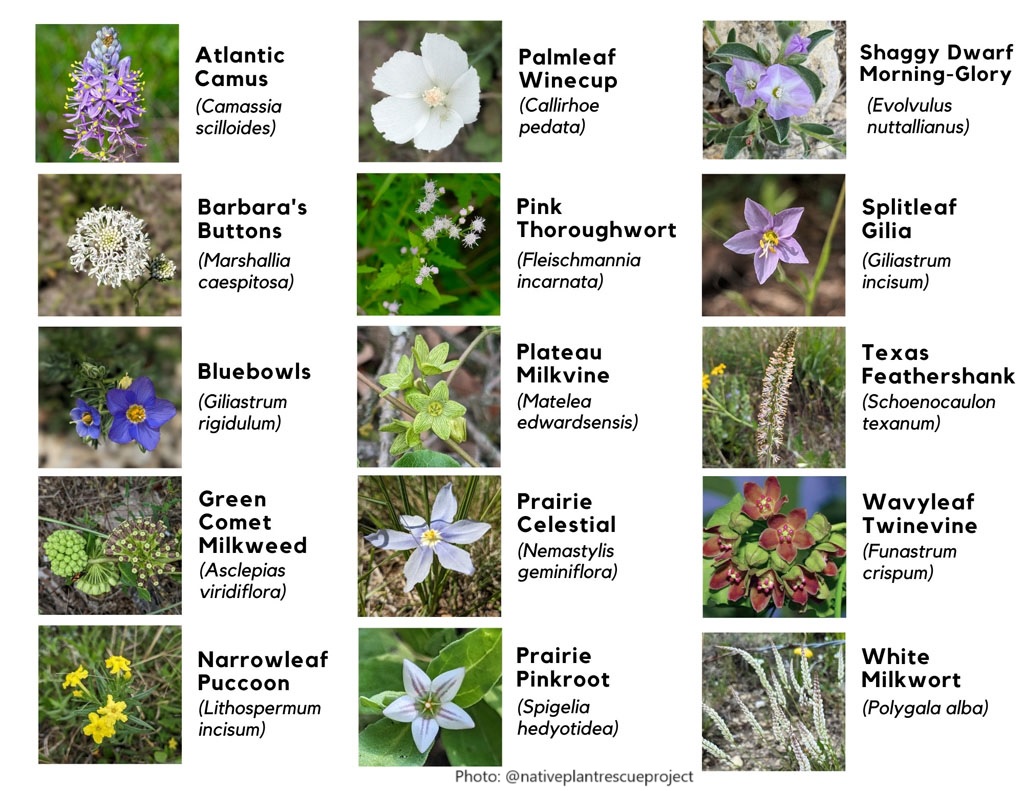
They work with developers and landowners for permission to harvest the plants (so, please don’t be encouraged to trespass!). Rescued plants and collected seeds go to local growers for plant sales and to the Wildflower Center and San Antonio Botanical Garden. Find out more at the Native Plant Society-Wilco.
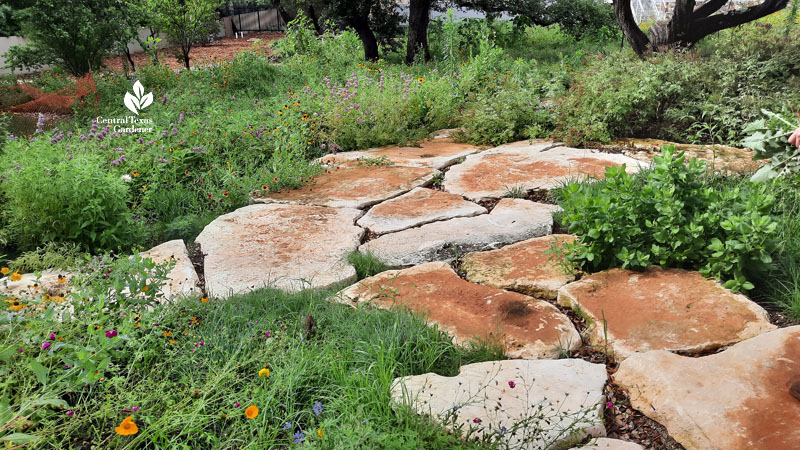
Check out NPSOT’s Native Plant Database to see what you can grow and find the chapter in your area. Plus, find out more about the statewide fall symposium November 9-11.
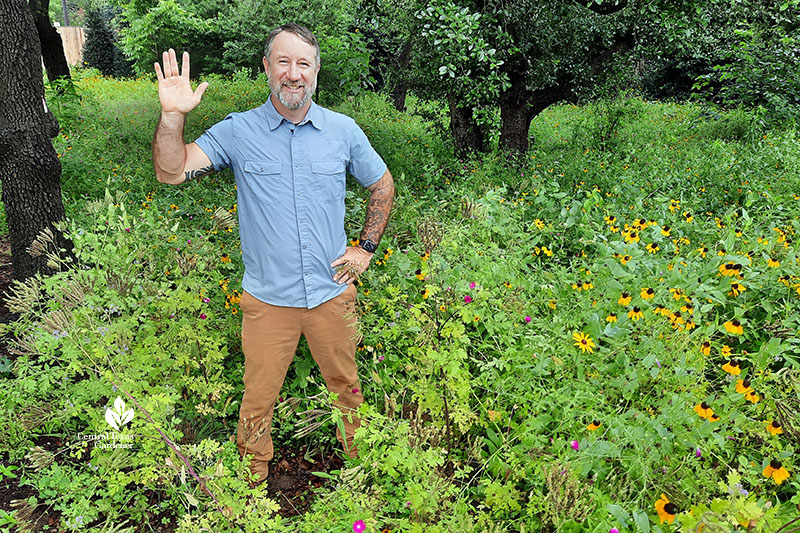
It didn’t take long for pollinators, birds, and other beneficial wildlife to hone in on a young native plant prairie just blocks from I-35 and downtown, even its first spring last May. When the property’s new owner wanted to restore habitat, Blackland Collaborative’s team—John Hart, Emily Manderson, and Michelle Bertelson—stepped in.
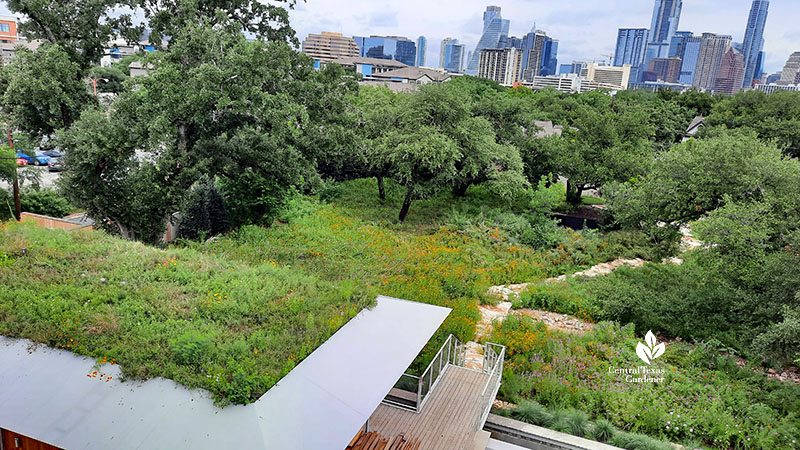
“Prairies, as it turns out, are really great at dealing with a lot of challenges that urban issues have,” environmental designer John Hart Asher told us. “Rainwater runoff, carbon sequestration, heat island mitigation, habitat.” Read more about our visit!
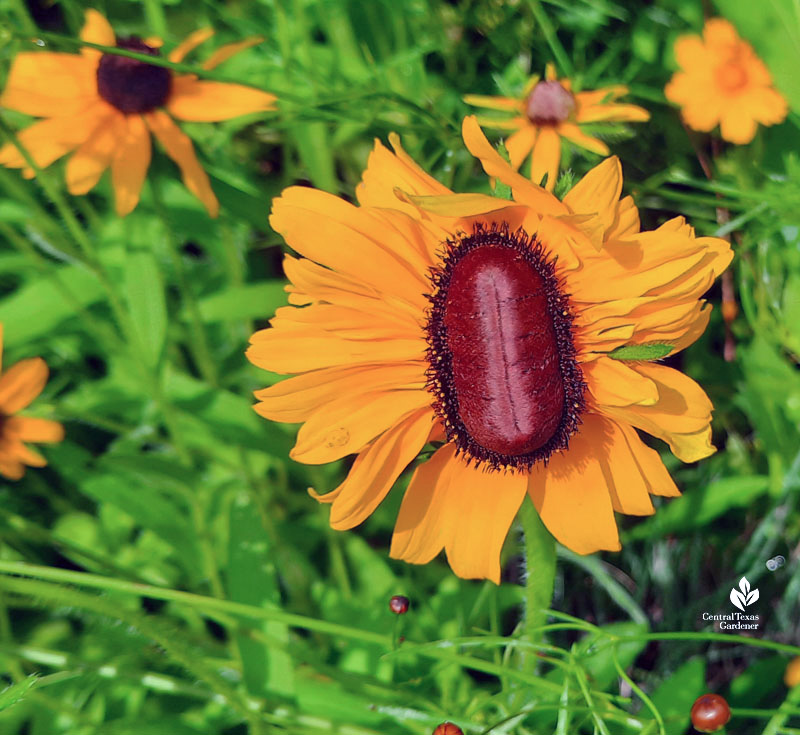
One surprise that day is this nonconformist clasping coneflower flaunting a velvety pincushion. So, what’s up with this native annual wildflower? This is fasciation, Daphne explains. “Most often found in the tips of stems, leaves, and flowers, fasciation occurs at the site of cell division. It’s not contagious, and is usually only found on one area of an individual plant. Re-occurrence the following year is also rare.”
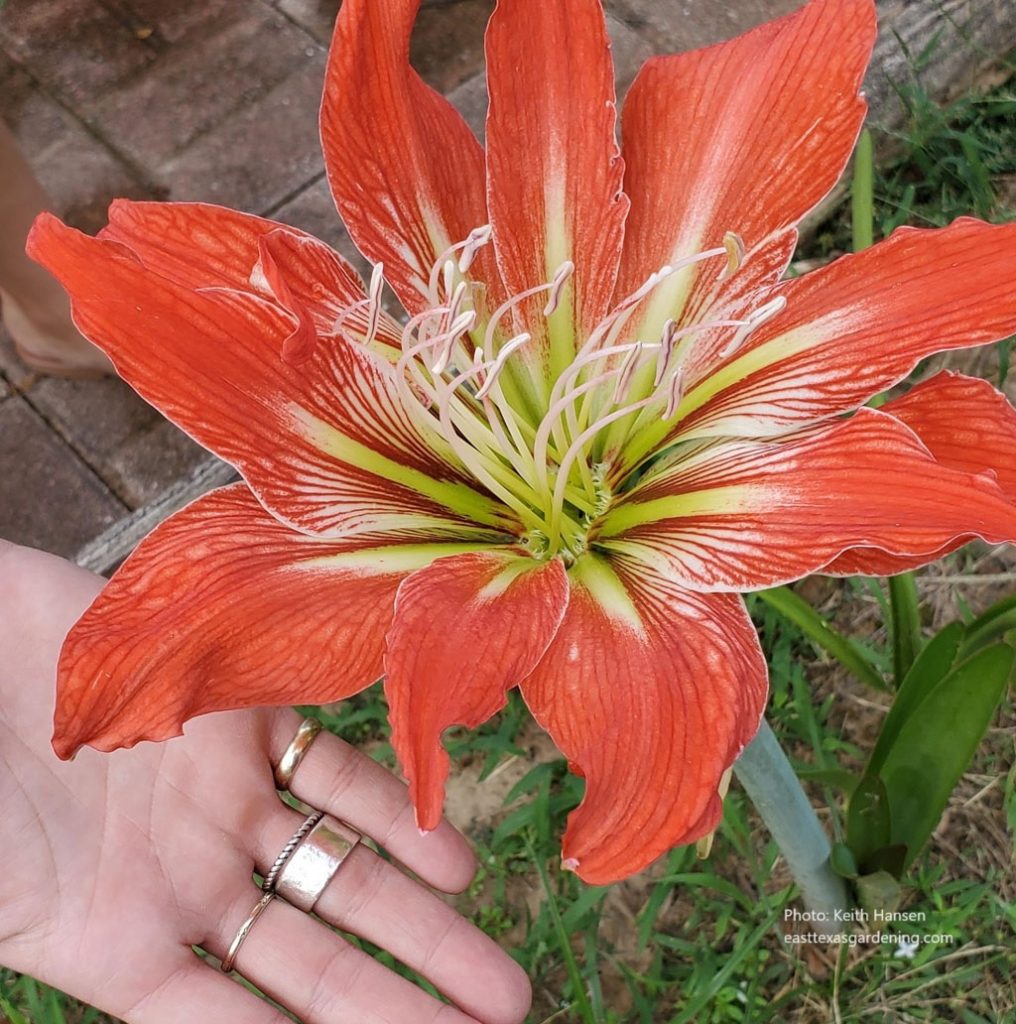
Here’s a fine example of fasciation on an amaryllis, thanks to fantastic horticulturist Keith Hansen of East Texas Gardening.
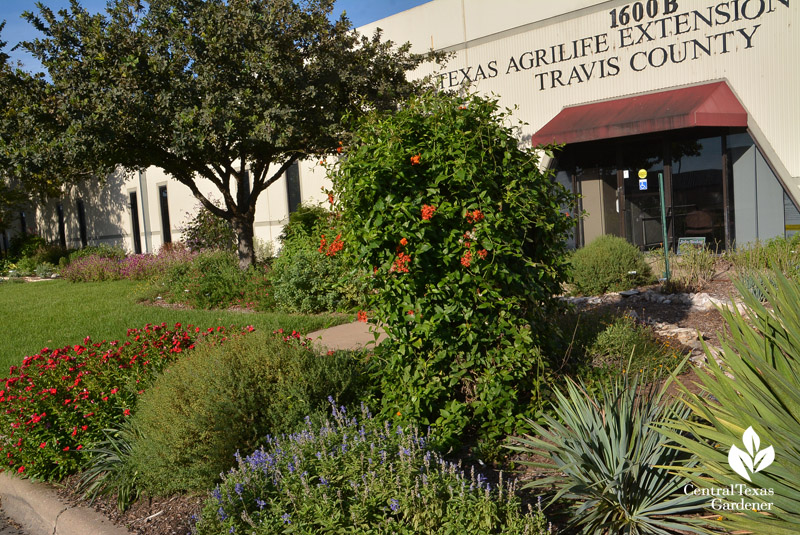
On October 21 from 9 a.m – 1 p.m., meet Daphne, Wizzie Brown, and lots of helpful Master Gardeners at Travis County Extension’s Earth-Kind® Gardening Field Day: Gardening in Extreme Conditions. This family-friend, free event includes workshops, demonstrations, and tours of the garden. Bring all your questions!
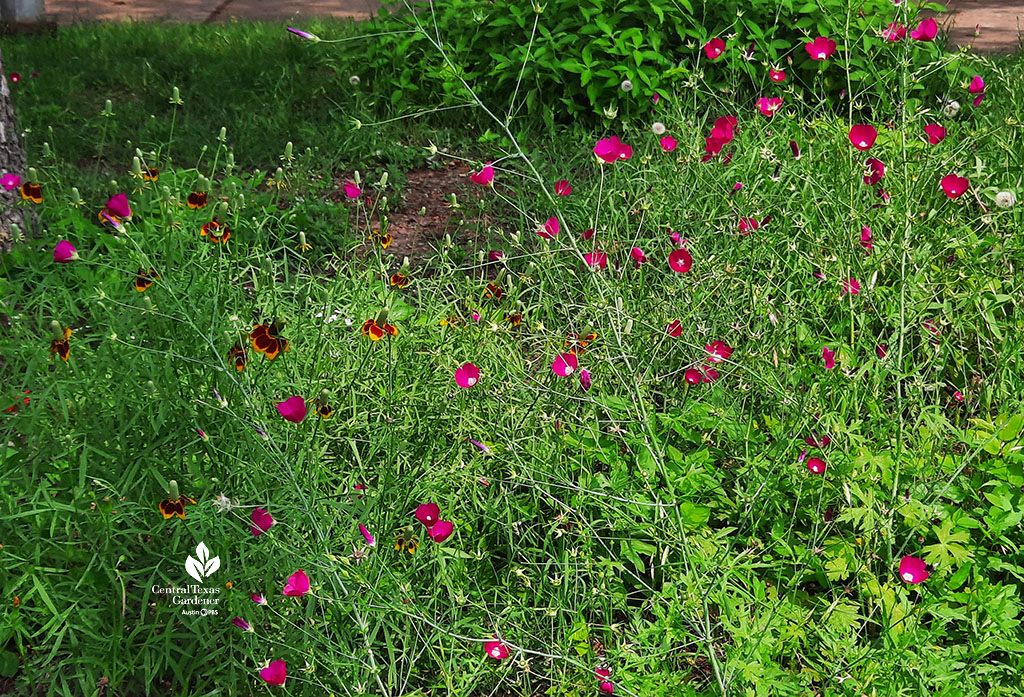
By the way, October and November is a great time to seed clasping coneflowers and other wildflowers including these curbside Mexican hats and annual winecups.
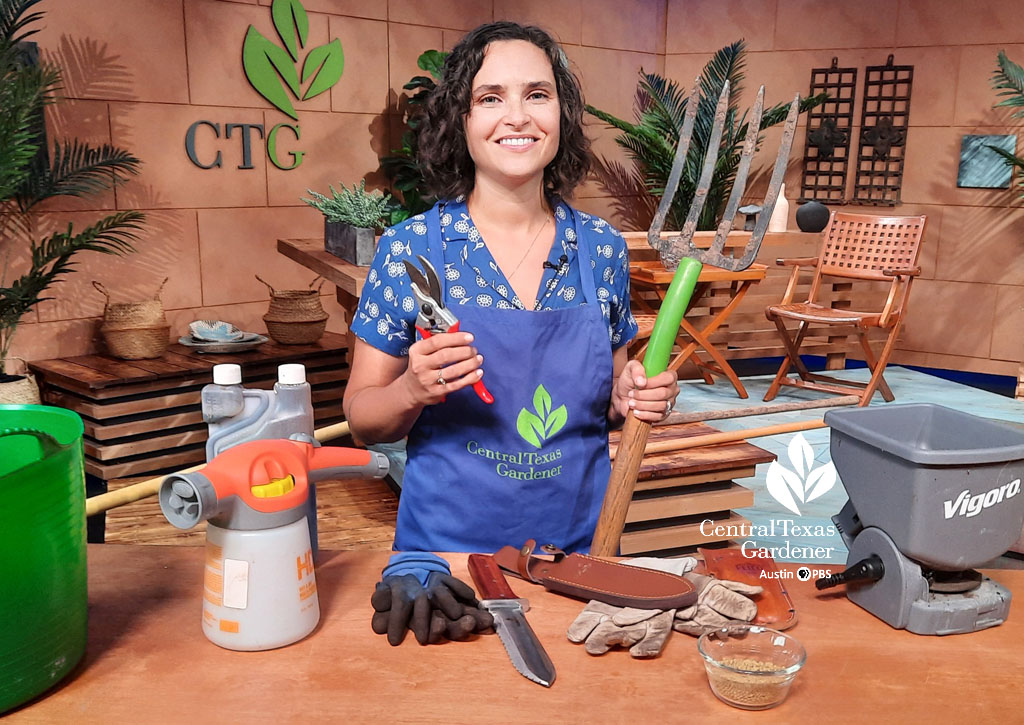
And, whether we’re talking native or adapted plants, there is no such thing as a “no maintenance” GARDEN! Sure, we can design for less work, but every plant needs a little grooming now and then. (Otherwise, go for plastic, but they will need dusting!) So, this week, get pro tips—from tools to tasks—with Marissa Kinsaul, Grounds Manager at ACC.
Watch now!
And thanks for stopping by! Next week, join us for a preview of the 2023 Garden Conservancy Open Days Tour—Austin! Linda
tags:

